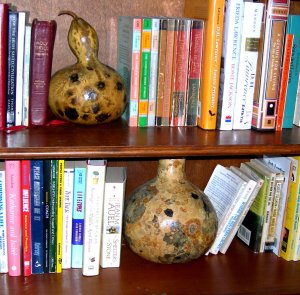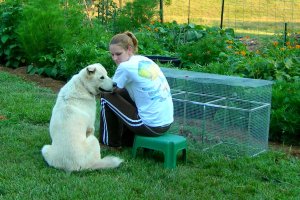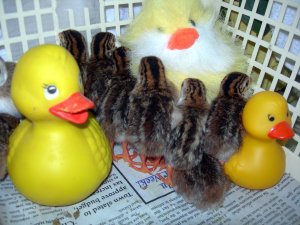MOVIE REVIEW: The Sea Inside
The Sea Inside (2004) ★★★★★
 The Sea Inside is about a person’s INHERENT RIGHT to own his or her individual life, to be able to choose to live or die with dignity from their own unique values, principles and beliefs rather than those imposed upon them. Javier Bardem, who plays the central character, and Alejandro Amenabar, the film’s director, are adamant that this is simply the story of one man and not a political statement. The story is based on the true story of a quadriplegic Ramon Sampedro from Galicia, Spain, who in 1998 did succeed in dying, after planning his death in such an ingenious way that even if all the details were discovered no one could be legally charged with the crime.
The Sea Inside is about a person’s INHERENT RIGHT to own his or her individual life, to be able to choose to live or die with dignity from their own unique values, principles and beliefs rather than those imposed upon them. Javier Bardem, who plays the central character, and Alejandro Amenabar, the film’s director, are adamant that this is simply the story of one man and not a political statement. The story is based on the true story of a quadriplegic Ramon Sampedro from Galicia, Spain, who in 1998 did succeed in dying, after planning his death in such an ingenious way that even if all the details were discovered no one could be legally charged with the crime.
Sampedro, using a writing implement held in his mouth and a writing stand he designed, poured out his thoughts and feelings in poetry and letters over the 29 years he had been, in his own words, a head attached to a dead body. These were the source of his published book, Letters From Hell. One film critic wrote: The film fails to convey the claustrophobic terror experienced by a man who called his book “Letters From Hell.”
This is not at all a downer of a movie or one that tries to manipulate your emotions. Nor is it a political bandwagon. It is a truly exceptional film not to be missed regardless of your own personal beliefs on one of the most controversial issues of our time. Maurine McCormick Harrison, 9/30/2008
OTHER REVIEWS
Rare is the motion picture which grapples with issues this provocative and profound. Rarer still is one which does so this well. Rick Kisonak, Film Threat
. . .COMPELLING YET UPLIFTING. Based on the real-life, three-decades-long campaign by Ramon Sampedro, a Spaniard paralyzed from the neck down in a diving accident. . . Never maudlin or manipulative, The Sea Inside celebrates freedom and explores the profundity of love. Claudia Puig, USA TODAY
Sensitively portrayed by Javier Bardem, Ramón regards his life in the wake of a crippling accident in his mid-20’s as a cruel, cosmic joke. In his imagination, he is still as he was before: a Zorba-like force of nature who once sailed the world . . .”The Sea Inside” presents a teasing paradox. Unambiguously pro-euthanasia on one hand, it shows how Ramón, bedridden and unable to move, infused many of those around him with a charged sense of life’s possibility. Stephen Holden, NEW YORK TIMES
. . .WITTY, SHARP, EMOTIONALLY RESTRAINED . . . A wide-ranging work of tremendous insight, maturity and humanity. . . Carina Chocano, Times Staff Writer
Director: Alejandro Amenabar
Cast:
Javier Bardem Belén Rueda
Lola Dueñas Mabel Rivera
Celso Bugallo Clara Segura
Joan Dalmau Alberto Jimenez
Tamar Novas Francesc Garrido
Spanish Language Awards:
2005 Academy Award®: Best Foreign Language Film
2005 Academy Award®: Best Makeup nominee
2005 Independent Spirit Awards®: Best Foreign Film
2005 Golden Globe Awards: Best Foreign Language Film
2005 Golden Globe Awards: Best Actor in a Motion Picture
NOTE: On Jan. 12, 1998, the 55-year-old Sampedro ended his life by drinking cyanide in an elaborately planned ritual that was videotaped and shown on Spanish television. His assisted suicide involved 10 collaborators, in addition to a cameraman. Each participant in the step-by-step process contributed to the ritual without having enough knowledge of the process to be legally indicted for murder. After his death, hundreds of supporters of his cause wrote letters, confessing to having aided and abetted him.
Wildwood Farm Gourds
 Each Wildwood Farm Gourd is a one-of-a-kind, totally unique, work of art created by Nature and carefully preserved to provide a thing of SIMPLE, ELEGANT BEAUTY to last a lifetime.
Each Wildwood Farm Gourd is a one-of-a-kind, totally unique, work of art created by Nature and carefully preserved to provide a thing of SIMPLE, ELEGANT BEAUTY to last a lifetime.
HOW DOES NATURE CREATE HER VARIED PATTERNS and DESIGNS?
 Gourds are 80% water and dry from the inside out. As part of the natural drying process, mold forms as moisture evaporates through the outer skin. This process created unique patterns on each gourd.
Gourds are 80% water and dry from the inside out. As part of the natural drying process, mold forms as moisture evaporates through the outer skin. This process created unique patterns on each gourd.
HOW DO YOU TAKE CARE of NATURE’S ART?
 Just as you do your other prized wood pieces in your home! Lemon oil is excellent to clean and hydrate this surprisingly hard and durable art.
Just as you do your other prized wood pieces in your home! Lemon oil is excellent to clean and hydrate this surprisingly hard and durable art.
PRESERVING NATURE’S ART
A single gourd vine can reach up to 15-20 feet! Gourds are fast growers but require up to four months or more to mature.
At harvest, gourds must be “cured” (allowed to harden in the sun for a week or more). Then they must be washed carefully to eliminate bacteria that can cause gourds to rot.
The drying process can take up to 6 months to a year, depending on  the size of the gourd. Mold is a natural part of the process. Special precautions must be taken anytime mold is doing its creative work! A gourd is dry when you can shake it and hear the seeds rattle inside.
the size of the gourd. Mold is a natural part of the process. Special precautions must be taken anytime mold is doing its creative work! A gourd is dry when you can shake it and hear the seeds rattle inside.
 When mold has done its work and must be removed, it must be done with special precautions. The gourds must then be washed and dried before applying two or more coats of varnish.
When mold has done its work and must be removed, it must be done with special precautions. The gourds must then be washed and dried before applying two or more coats of varnish.
 To get the preserved, simple elegance of each one-of-a-kind piece of Nature’s gourd art requires a year or MORE of carefulful attention and a LOT of work! You have to love it to do it! You have to be in love with Nature’s Art!
To get the preserved, simple elegance of each one-of-a-kind piece of Nature’s gourd art requires a year or MORE of carefulful attention and a LOT of work! You have to love it to do it! You have to be in love with Nature’s Art!
Guinea Teenagers
What do you do when your keets need a larger space NOW? You turn a trampoline leftover from raising your human brood into a new, spacious guinea home for teens. We knew we’d need something larger later but with my mom breaking her elbow, having two surgeries and two hospital stays to fix it, we were caught short!
 We had the old trampoline and chicken wire found in a farm barn leftover from 30 years ago. It’s the right size to keep out predators. We also tried to make it secure from burrowing under to get in and harm our chickies. We put in a metal frame which provides a place to roost.
We had the old trampoline and chicken wire found in a farm barn leftover from 30 years ago. It’s the right size to keep out predators. We also tried to make it secure from burrowing under to get in and harm our chickies. We put in a metal frame which provides a place to roost.
With a little ingenuity on my husband’s part and a day’s worth of work by both of us, were able to move our growing keets out of their cramped quarters into a much larger space where they could still be safe but move around a lot more. We can see them from our bedroom window! Each morning I go to the open window and call out in a baby-talk voice, “Good morning, Chickies! It’s Mommy!” Instantly, they scurry to the side of the pen to look for me, necks outstretched, eagerly expectant! I;m the only mommy they’ve ever known! Their consistent source of food, water and attention!
The back side of the pen is covered with a heavy plastic. This is to provide shelter from sun and rain. When mature, guineas can live on their own out in the open roosting in trees in all kinds of weather. Bricks leftover years ago from building our house hold the plastic in place along with other ties. The houseplants add a bit of ambience to their home but really I put them there so I would remember to water them!
One day a pigeon visited. Just flew in from some city, lost I guess. It was attracted to the chicken crumbles outside the guinea cage.
Raising Guineas – Moving Out of the Brooder
 After six weeks keets are ready to leave the brooder. Ours were getting too big to be inside with us anyway! The brooder stage is like Preschool. The second six weeks is like Elementary School. They can expand their worlds more but still need a lot of oversite and protection.
After six weeks keets are ready to leave the brooder. Ours were getting too big to be inside with us anyway! The brooder stage is like Preschool. The second six weeks is like Elementary School. They can expand their worlds more but still need a lot of oversite and protection.
For their second home, we used a metal frame gleaned from a yard sale (God only knows what it’s original purpose really was. I got it for a tomato cage.) Around the metal frame we attached wire with holes small enough to keep our babies from flying out. Also, to keep preditors, like snakes, from getting in.
 We made a lid that opened so we could easily provide food and water AND handle our babies as more insurance that they would be attached enough to us not to roam (as guineas tend to do). We used small tie-downs to secure the lid.
We made a lid that opened so we could easily provide food and water AND handle our babies as more insurance that they would be attached enough to us not to roam (as guineas tend to do). We used small tie-downs to secure the lid.
 We left the bottom open so we could just lift the cage off and clean off the thick plastic sheet with a hose. We were using straw as litter and still giving them grass & bugs to enjoy. Also, we could take them with us when we worked in the garden where they could eat grass & bugs, their little feed directly on the grass.
We left the bottom open so we could just lift the cage off and clean off the thick plastic sheet with a hose. We were using straw as litter and still giving them grass & bugs to enjoy. Also, we could take them with us when we worked in the garden where they could eat grass & bugs, their little feed directly on the grass.
Smudge requires close monitoring. He’s the prime suspect in the disappearance of a pair of mallard ducks that made our farm pond home a few years back. We started early getting him used to the idea that the keets are OFF LIMITS!
We put our babies into a plastic washable basket covered with a large towel whenever we need clean off old litter and put in fresh. Also, when we took them to the garden with us. This allowed us more opportunities to get them used to being handled.
Our babies lived on our deck at this point in their development. My husband built a deck gate that can keep dogs and other larger predators out AND so we could keep an eye on them from the kitchen. We used a tarp to make some shade in the day and a place they could stay dry when it rained. At night we covered the whole cage with the tarp to keep out chill air and make them feel safer in the dark.
Raising Guineas – 1st SIX WEEKS
You will need:
1- BROODER (heated container)
2- TURKEY STARTER feed (28-30% protein)
3- WATERING BASE to connect to a quart jar
4- FEEDER to hold the turkey starter
5- WOOD SHAVINGS (not cedar which can be toxic)
6- TEXTURED SHELF LINER for firm footing
7- WIRE or MESH COVER
8- THERMOMETER to monitor temperature
9- FINE SAND or GRIT to help keets digest food
My BROODER (heated container) consisted of a:
1-DEEP CLEAR PLASTIC TUB with room for keets, feeder & waterer. It’s important to have enough room for keets to get away from heat. 2-HEAT LAMP: Temperature could be adjusted by altering the distance of the lamp from keets, and using different bulbs. Food & water needs to be on the opposite side from the heat. TIP: If keets stay huddled together it may be too cool; if they sleep spread far apart it may be too hot.
AS KEETS GET BIGGER, their living space must increase. So, when they outgrew the tub shown I put them in the largest clear plastic tub I could find that would fit on my counter. We REALLY enjoyed having them as a part of our day! Keets are amazing as they grow and lots of fun!
 Feed, waterer, feeder and wood shavings can be purchased at a farm store. In the bottom of the tub I kept wood shavings on top of a non-slippery shelf liner that could be washed and reused each time I cleaned the tub and put in put in fresh wood shavings.
Feed, waterer, feeder and wood shavings can be purchased at a farm store. In the bottom of the tub I kept wood shavings on top of a non-slippery shelf liner that could be washed and reused each time I cleaned the tub and put in put in fresh wood shavings.
KEETS MUST BE KEPT WARM until fully feathered – ABOUT 6 WKS.
(I lost two keets the first few days because they got chilled.)Temperature can be lowered 5 degrees each week after 1st week.
Weeks Brooder Temp
WK 1 95 degrees
WK 2 90 degrees
WK 3 85 degrees
WK 4 80 degrees
WK 5 75 degrees
WK 6 75 degrees
Keets LOVE to eat grass & clover from your yard! And, their favorite food of all is BUGS!!! We had a lot of fun capturing bugs attracted to our outside lights and putting them in sandwich bags to feed our babies. They go WILD for bugs! They especially loved all the Japanese Beetles we picked off our raspberry & blackberry vines! We discovered that bugs with any kind of red on them were rejected by our little babies. Anybody know why? We also enjoyed identifying the various unfortunate bugs we captured.
HANDLE keets OFTEN. ENCOURAGE keets to sit on your finger. Guineas have a reputation for wandering afar and not coming home! If they are handled often from very young they more likely to stay home.
MORE TIPS:
FIRST WATER for keets needs to be warm to prevent chilling.
MAKE SURE keets can’t get into water to prevent chilling or drowning.
PLACE FOOD close to food source the FIRST DAY.
ADD 1 tablespoon of sugar per quart of water to give keets quick energy.
ADD SAND or GRIT to food in a ration of 1 to 10.
PREVENT DRAFTS in brooder area.
GUINEAS LOVE to ROOST! Make sure they have some way of getting higher!
Guinea Babies (Keets) at Wildwood!
In June my friend Joan & I were coming home from a day trip when we passed a sign on a backroad country mailbox: GUINEA KEETS for SALE. On an impulse we each came home with baby guineas! Here mine are their first night with us and two weeks later.
ABOUT GUINEAFOWL
GUINEA BABY: is called a keet
GUINEA MOM: is called a hen
GUINEA DAD: is called a cock
GUINEAS:
> have featherless heads
> sport a spangled gray plumage
> consume large amounts of insects
> are easy & inexpensive to raise
> seldom bother garden or flower plants
> are normally monogamous, mating for life
> are great yard watch dogs & sound alarm whenever anything unusual occurs
> discourage rodents with their call
> will kill snakes, kill & eat mice & small rats
HELP CONTROL:
deer ticks, wood ticks, grasshoppers, flies
As an avid gardener, I wanted guineas to help with the bugs in my garden, especially the EVIL SQUASH BUG! They have also turned out to be an enormous source of learning and pleasure!









Recent Comments